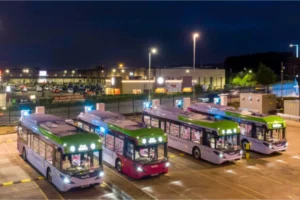Hammersmith Bridge has been closed to pedestrians and river traffic because of an increased risk to public safety due to a sudden deterioration in key parts of the suspension structure.
Specialist engineers have been undertaking 24/7 monitoring of the structural integrity of the bridge throughout using an extensive network of sensors on the 19th century structure. The deterioration in the structure was exacerbated by the recent heatwave which caused cracks to significantly increase – despite measures taken to mitigate the heat, according to Hammersmith & Fulham Council.
Cllr Stephen Cowan, Leader of the London Borough of Hammersmith & Fulham, said: “Safety is the number one priority. I’m absolutely sure that we averted a catastrophe by closing this 19th century suspension bridge to motor vehicles last year.
“We have some of the best engineers in the world working on this scheme. They advise we now face a similar dilemma. I appreciate how inconvenient this will be to thousands of people on both sides of the river and I am sorry about that, but we must follow the engineers’ advice which is why the bridge will be closed with immediate effect today.
“We will update everyone as soon as engineers have investigated the scale of the recent damage. I have instructed them to find a plan to safely reopen it as quickly as they can.”
The bridge was designed and built in the 19th century by the noted civil engineer, Sir Joseph Bazalgette. It was opened by the Prince of Wales in 1887.
“The micro-fractures were only discovered because in 2014, I commissioned a comprehensive structural integrity review of all aspects of the bridge’s suspension structure which began in 2015. That was the first such review in decades” added Cllr Cowan.
“The bridge had been badly maintained for many years. The structural integrity review quickly began to find decades of unchecked corrosion riddled throughout. It found that important mechanisms on the bridge had seized up years earlier causing the suspension structure to cease to operate as it had been designed to – causing other problems elsewhere in the machinery. Last year, using the latest technology, it discovered dangerous micro-fractures in the cast iron pedestals that hold the suspension structure in place.”
“These unchecked structural failures compromised the flexibility of the suspension chains over previous years and caused the micro fractures.”
Recent attempts to secure the necessary funding from government to repair the have been unsuccessful. The recent Transport for London bid to stabilise the bridge was rejected.
“Today’s closure shows how much more work is required to get this beautiful bridge fully restored. And we’re – once again – calling on the Government to fund the final phases of the restoration work,” said Cllr Cowan.
“TfL has lost 90 per cent of their revenue during the Covid-19 pandemic. As a direct result, their funding for the on-going monitoring of the bridge and its full refurbishment is now at risk.
“We remain determined that this beautiful bridge will be fit for purpose for generations to come and we’ll continue to do everything within our power to deliver on that.”





















